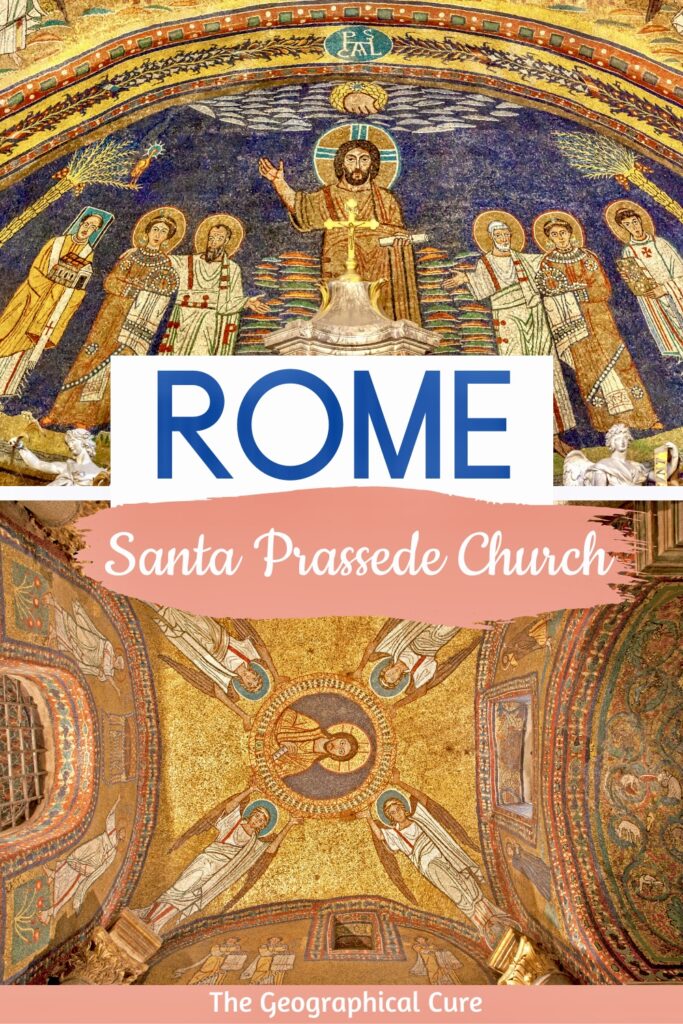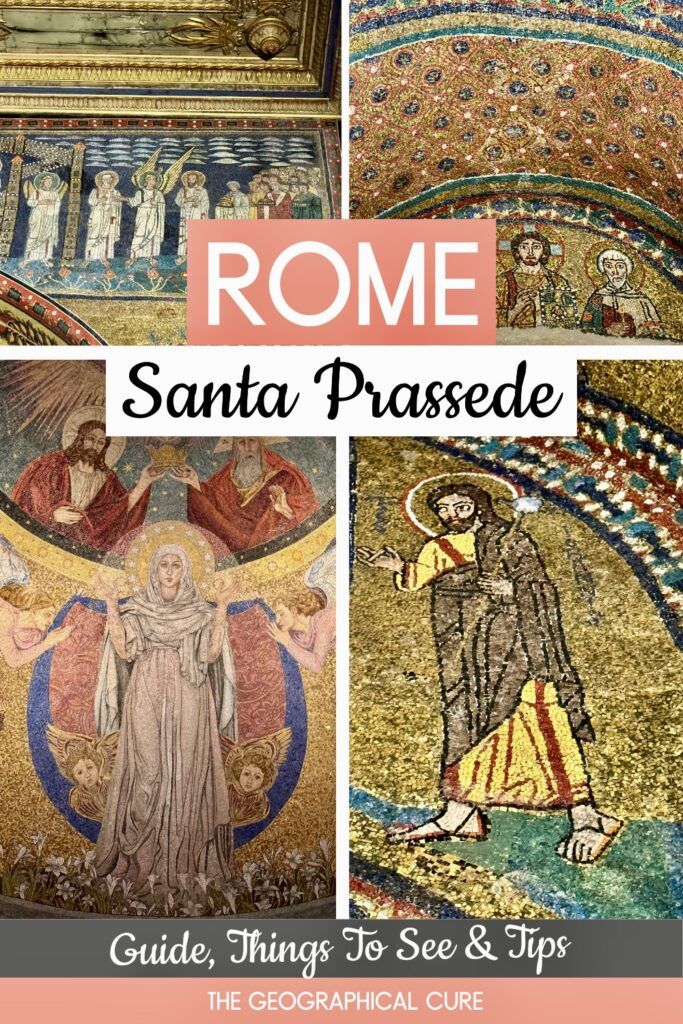Just a few steps from the majestic Santa Maria Maggiore in Rome’s Monti neighborhod, you’ll find the ancient Church of Santa Prassede, or Praxedes. It’s an unassuming 9th century marvel.
As a casual observer, it’s easy to just walk on by and overlook the church. The stripped down muted tangerine facade belies the wonders inside. You have no sense that you are about to walk into a major church.
Though the church’s exterior is simple, the inside is a different story! As you step into the nave, you’ll discover one of Rome’s most spectacular and historically significant churches.
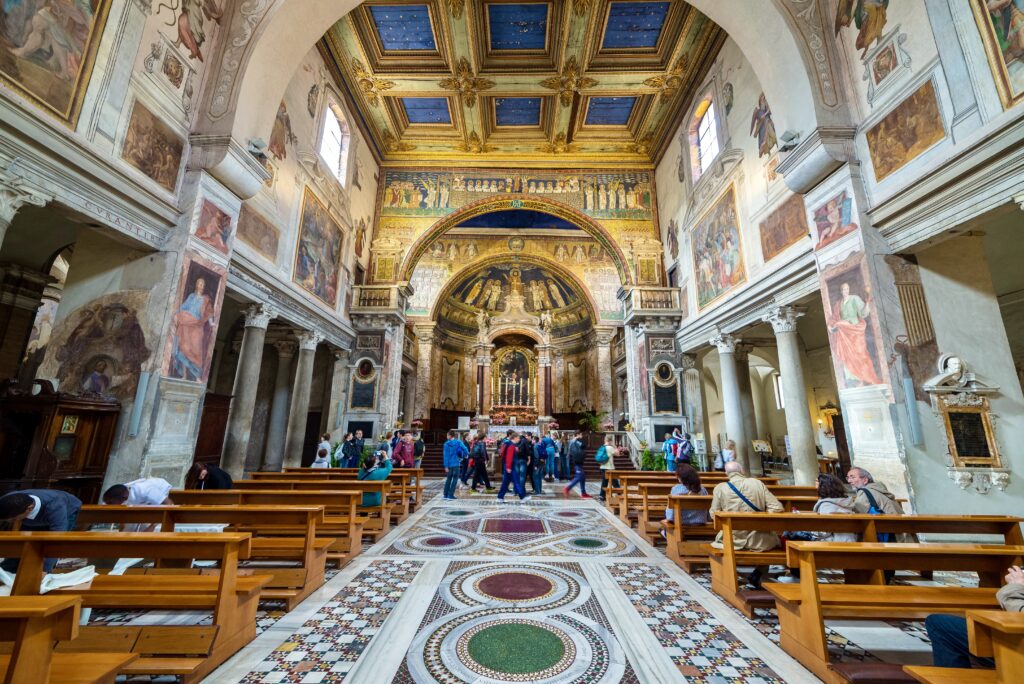
Santa Prassede is a refreshing change from the typical Baroque style typically seen throughout Rome. It’s a great medieval space with glowing 9th century Byzantine-style mosaics, which are the best you’ll find anywhere in Rome.
The basilica was commissioned by Pope Paschal I. Construction began in the early 9th century, around 822 AD, as part of Pope Paschal I’s campaign to restore and beautify several churches in Rome.
The church is dedicated to Saint Praxedes and her sister Saint Pudentiana, daughters of Saint Pudens. The sisters were martyred because they provided Christian burials for martyrs, against Roman law.
The church itself is considered an example of the Carolingian Renaissance. This was a cultural revival during the 8th and 9th centuries under the Carolingian dynasty. It focused on reviving Roman architectural styles and emphasized classical motifs with a Christian interpretation
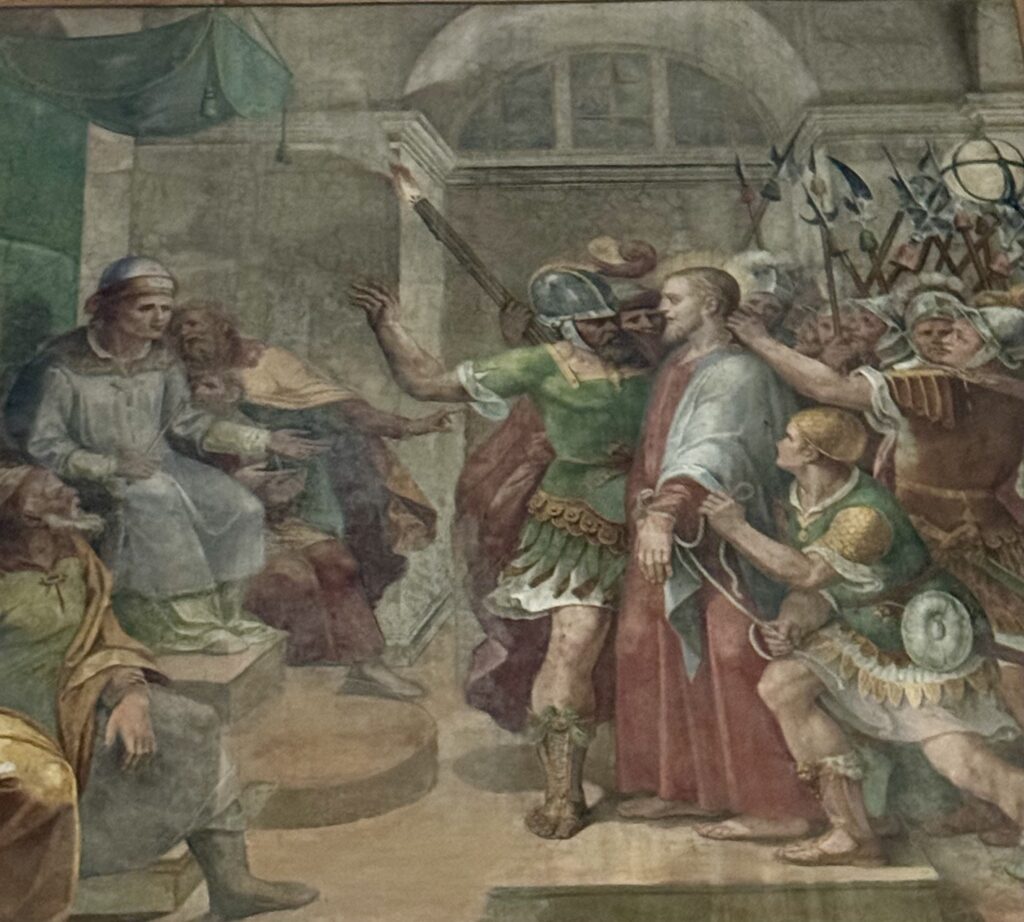
Guide To St. Prassede: What To See
Here are some of the highlights to see on a visit to Santa Prassede.
Nave
Upon entering, one is greeted by the traditional Cosmatesque flooring, a distinct feature of Roman churches.
The church has a traditional basilica layout, with a central nave and two side aisles.
The nave is separated from the aisles by 16 granite Corinthian columns, which support the arches above. Many of the columns are spolia repurposed from earlier Roman buildings.
The ceiling is beautiful. It’s a coffered ceiling divided into a grid of recessed panels with gold plated cornices. They are set against a navy blue sky with gold stars.
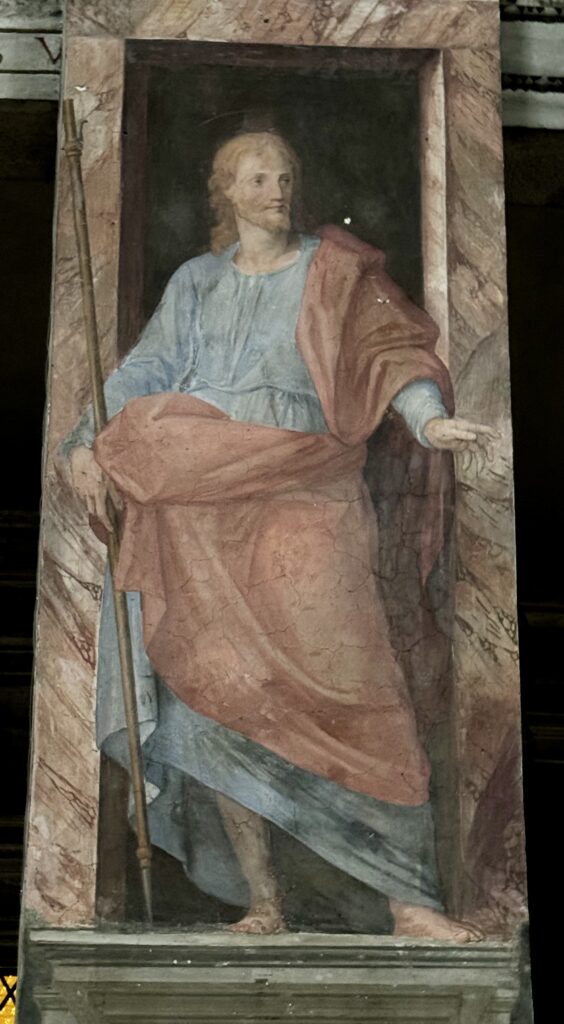
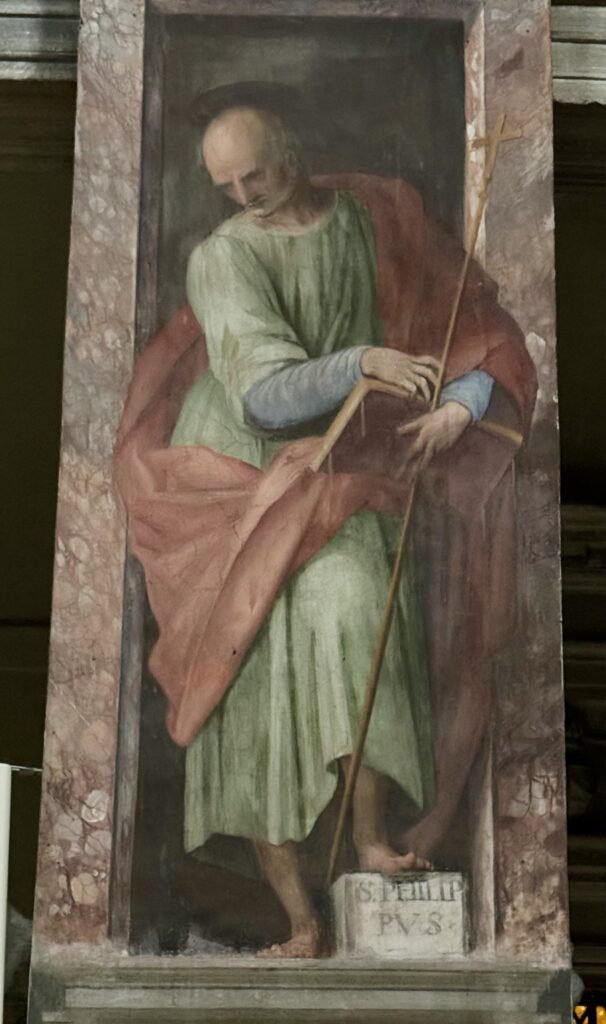
Frescos
The church’s interior features eight frescoes set on the walls above the columns.
These frescoes were painted between 1594 and 1596 and were commissioned by Cardinal Alessandro de’ Medici. The cycle illustrates the Passion of Christ.
It begins at the end of the nave on the left-hand side, proceeding counter-clockwise. The frescoes include depictions of the Annunciation by Stefano Pieri and feature the Aldobrandini coat of arms above the central door.
Though they’re faded by time, they are nonetheless lovely. You’ll also see frescos of saints on the eight pillars.
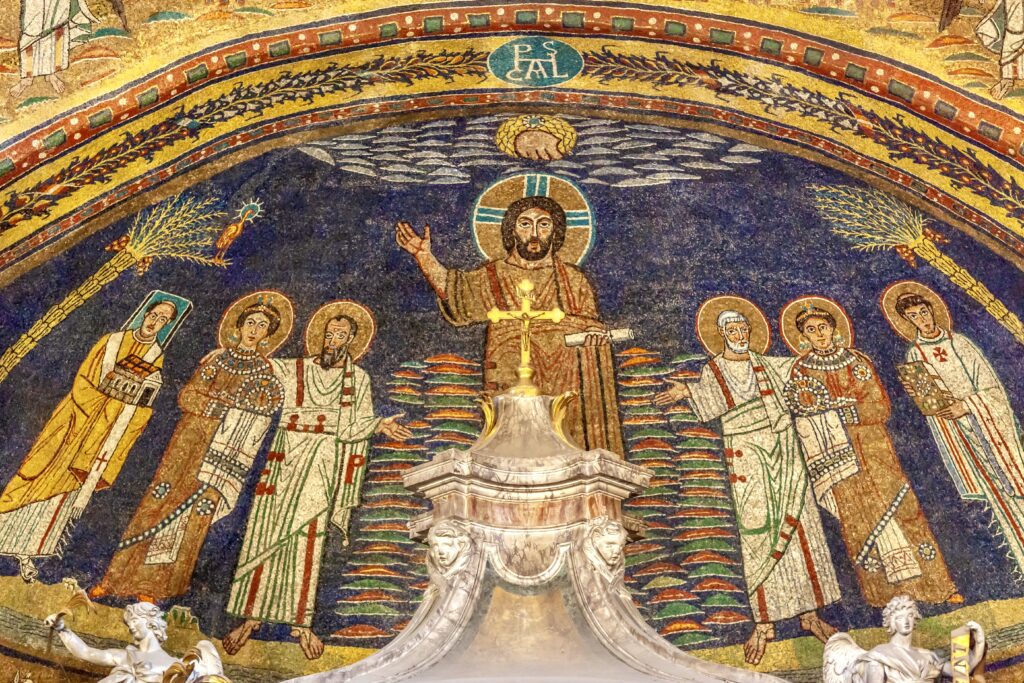
Apse Mosaics
The church’s apse and triumphal arch are adorned with exquisite jewel-like mosaics. They depict scenes from the Book of Apocalypse.
The arch depicts the Heavenly New Jerusalem, a symbolic representation of celestial glory. The decoration echoes the style found in the 6th century Basilica of Saints Cosmas and Damian in the Roman Forum.
In the center of the upper section, set against a backdrop of blue is the central figure of Christ. He’s depicted with his right arm raised, displaying the crucifixion wound on his palm.
In his left hand, he holds the scroll of Christ. A halo with a blue cross encircles his head. It looks like it was dropped there by the hand of God above him.
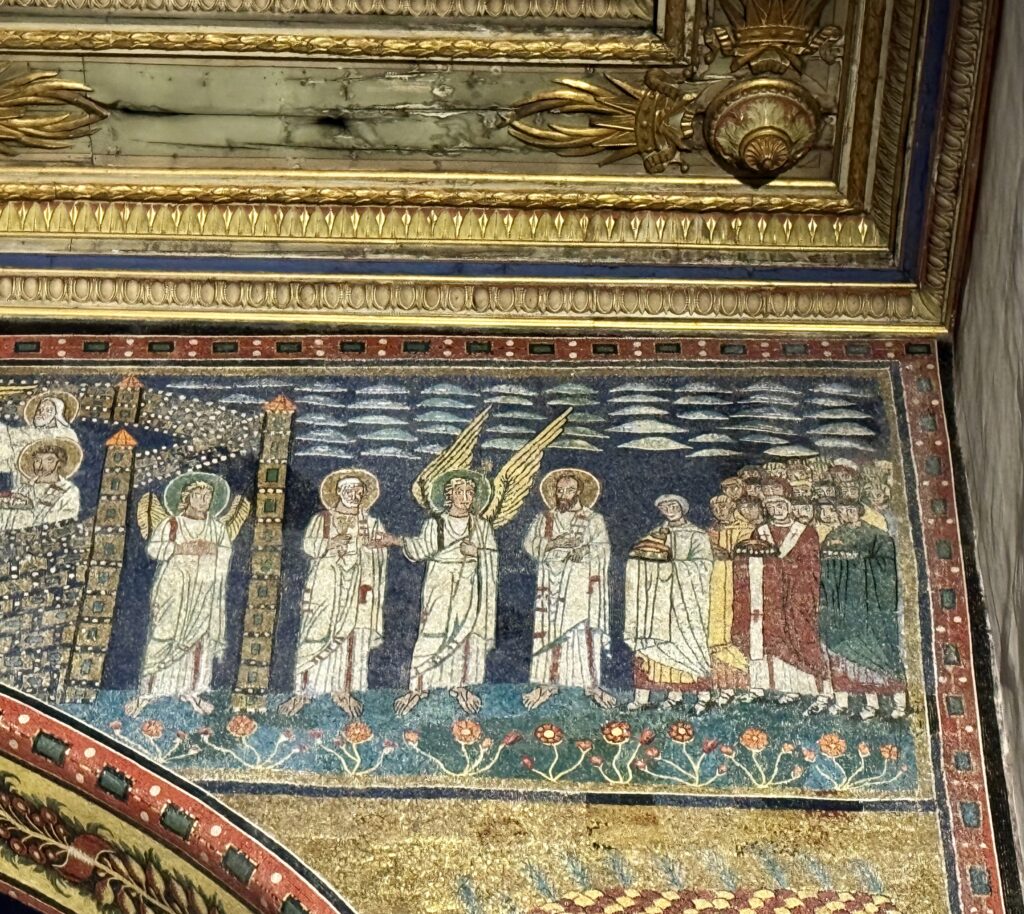
To the left, Saint Peter is shown introducing Saint Prudentiana to Christ, while on the right, Saint Paul presents Saint Praxedes.
These figures are framed within a space outlined by palm plants, symbolizing paradise and immortality. A little peacock on one represents the resurrection.
On the far left is Pope Paschal, who built the church. He’s presenting the a model of the church to Jesus.
Beneath this scene, there’s a row of twelve lambs, representing the apostles. They are symbolize peace and purity. Above, the evangelists are portrayed, and below them are twenty four elders, all dressed in white linen, completing the composition.
Altar
The main altarpiece is a canvas titled St. Praxedes Gathering the Blood of the Martyrs by Domenico Muratori, created around 1730–35.
In front of it is a baldacchino, which partially obscures your view of the mosaics. Under it is the entrance to the crypt.
Chapel of San Zeno
The Chapel of Saint Zeno, also dating from the 9th century, is a masterpiece in its own right. It was added to the church primarily to house the relics of Saint Zeno.
Adorned from floor to ceiling with shimmering mosaics, it was once known in the Middle Ages as the “Garden of Paradise” – a fitting nickname for such a visually stunning space.
The ceiling is gold, representing the Byzantine heaven.
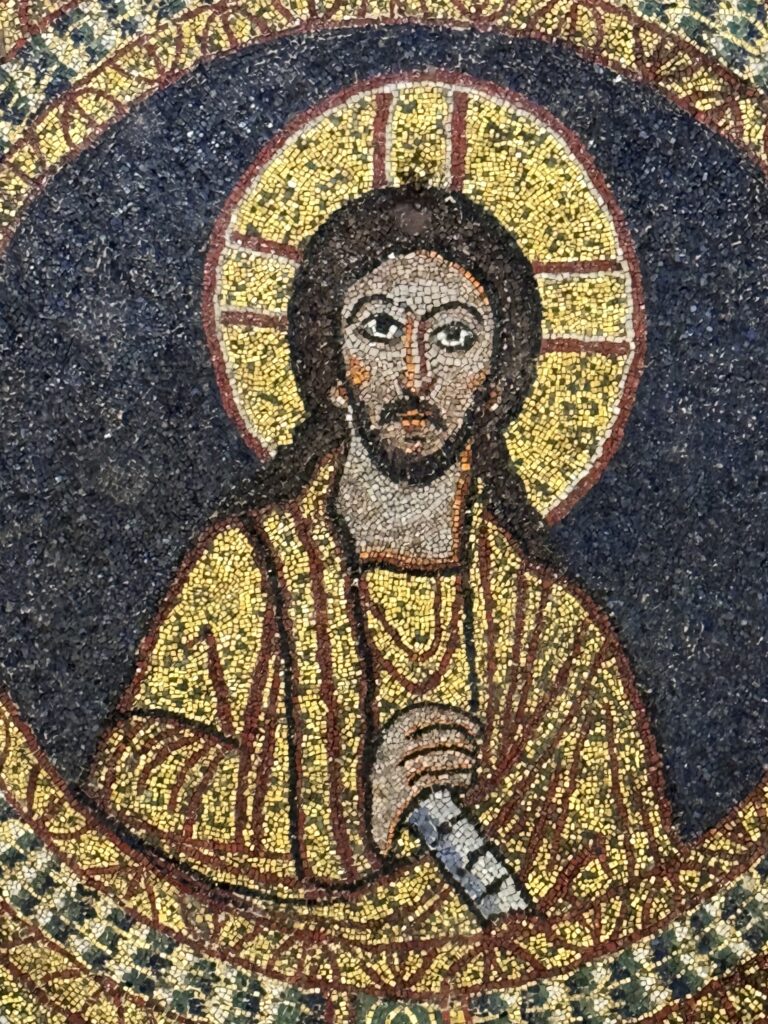
An icon-like image of Christ Pantocrater is in the center. It symbolizes Jesus Christ’s dual nature as both human and divine.
He’s gracefully upheld by four angels, known as “Paschal’s Lolitas.” The winged angels are in white, with lipstick and red cheeks.
Each angel is a symbol of divine guardianship. They stand atop ancient Roman columns, blending historical layers in a harmonious display.
On the walls are saints walking among patches of flowers. In the altar niche, Mary and Jesus are flanked by sister Praxedes and Pudentia.
The side entrance features a captivating mosaic row of four women, an artistic blend of Roman matronly dignity and Byzantine regal elegance.
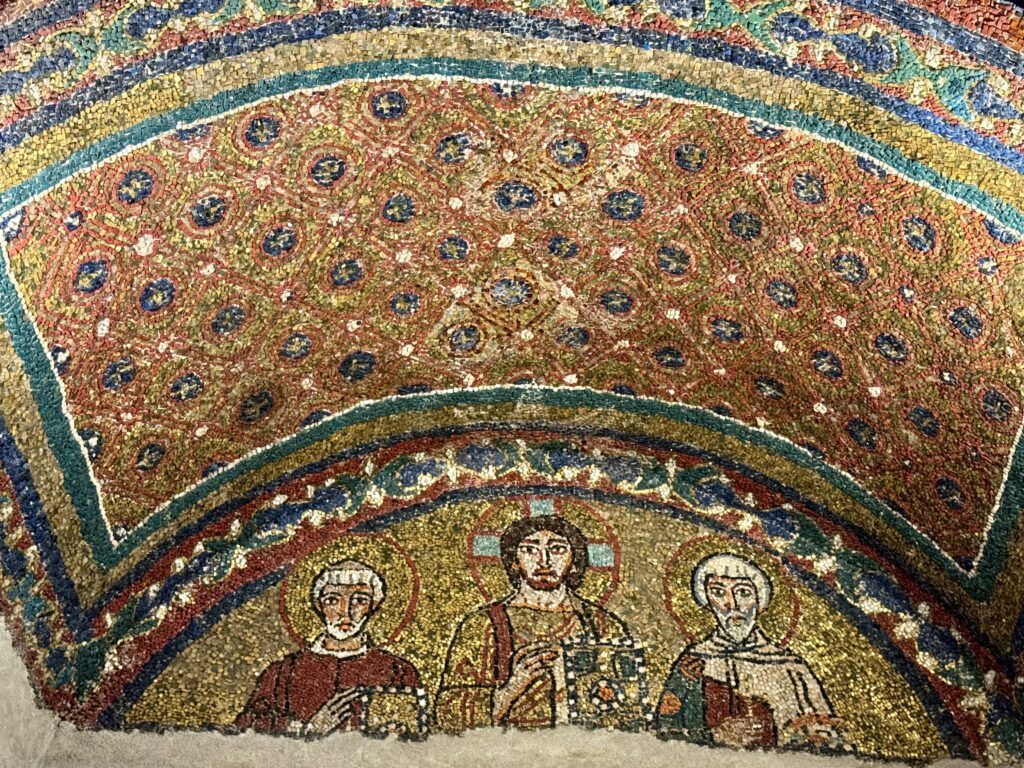
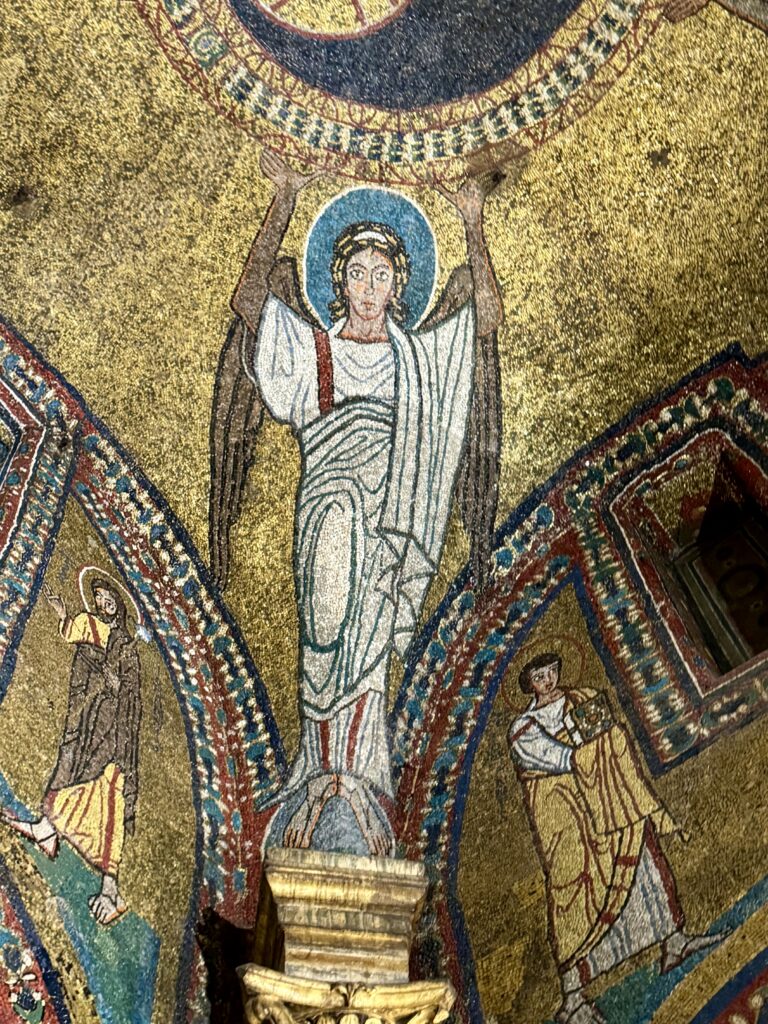
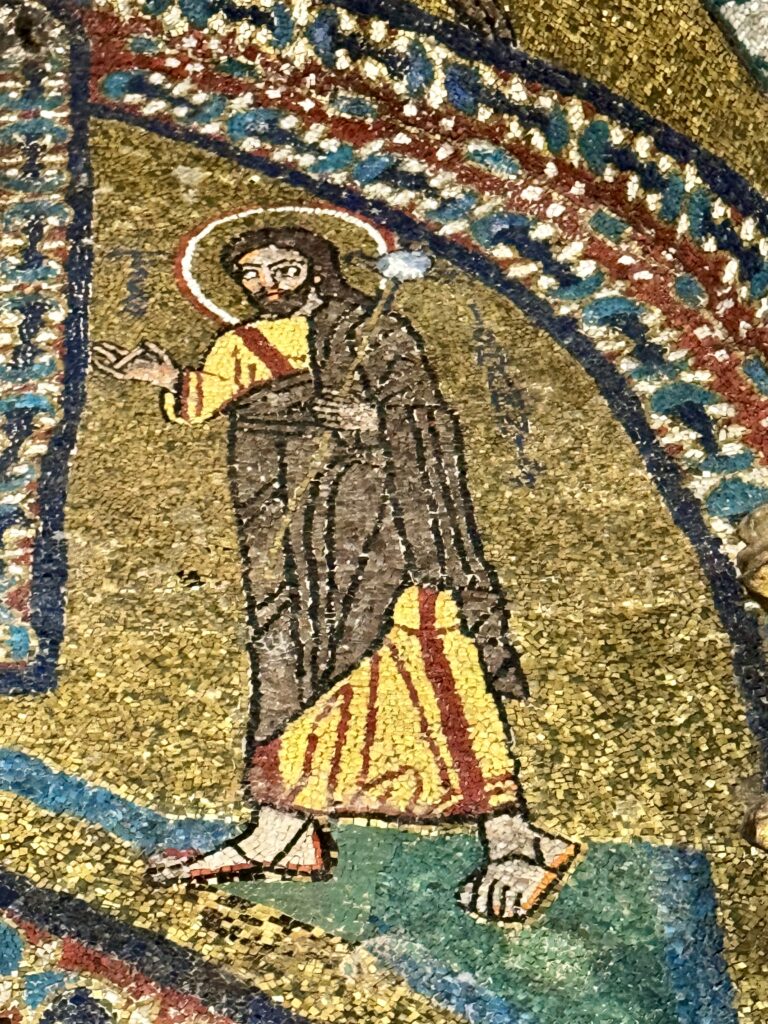
This fusion underscores the church’s historical significance as a melting pot of cultural influences.
Within the chapel, there’s a revered reliquary that is believed to house the column where Jesus was scourged before his crucifixion.
Legend holds that this sacred relic was transported to the chapel from Jerusalem in 1223, during the papacy of Honorius III.
Adjacent to the chapel, a wall mosaic beautifully portrays Jesus, Mary, and various saints, each face delicately set within its own circle.
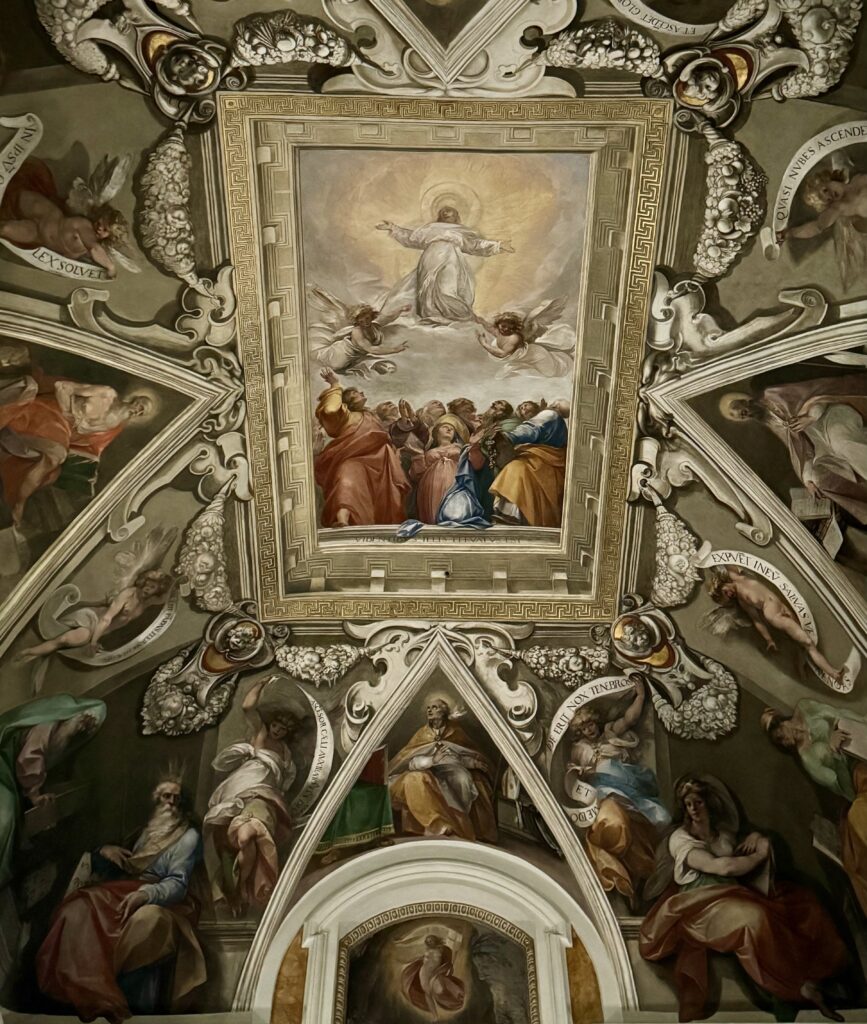
Oligiati Chapel
This chapel is in the left nave. It was built by Bernardo Olgiati in the late 16th century.
There are several funerary monuments. But the real highlight is the vaulted ceiling.
It’s a ribbed vault with lunettes completely covered in frescos painted by Giuseppe Cesari. They illustrate the ascension of Christ, who is surrounded by prophets and sibyls.
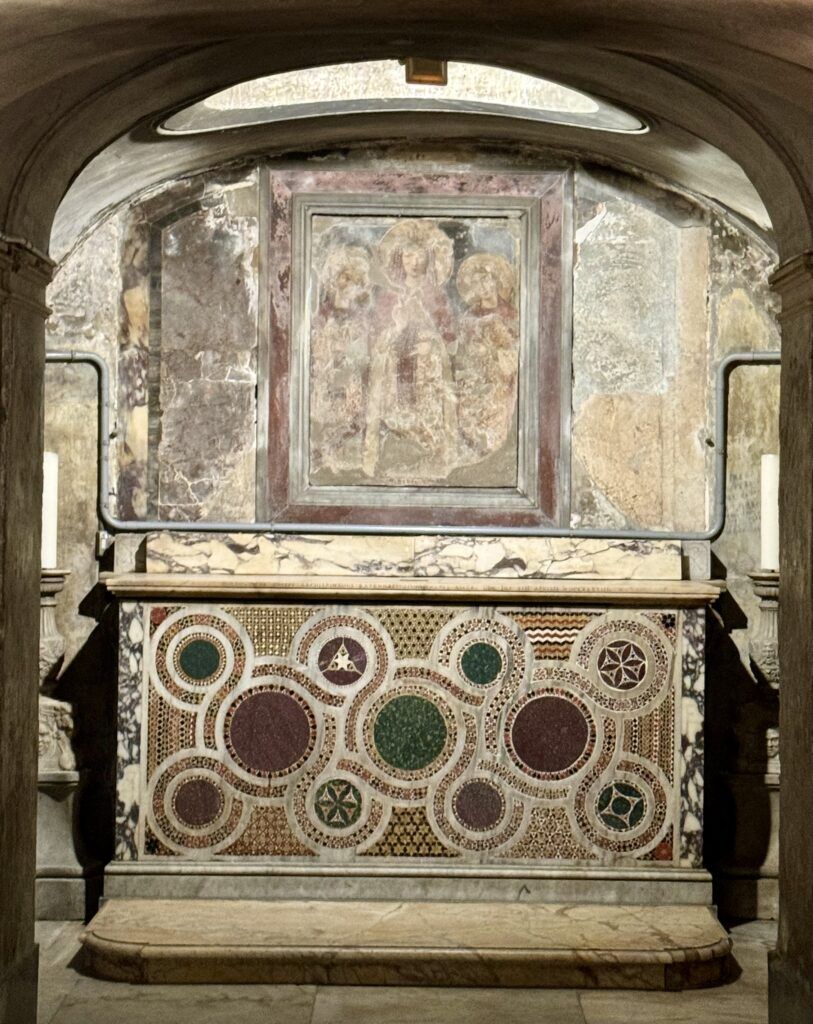
Crypt
The crypt contains precious sarcophagi, including the tombs of St. Praxedes and St. Pudentia.
At the end of a corridor is an altar, with two chandeliers decorated with winged and grotesque figures.
The fresco above it is, regrettably, in quite poor condition. From there, a small stairway takes you to the Chapel of the Cross.
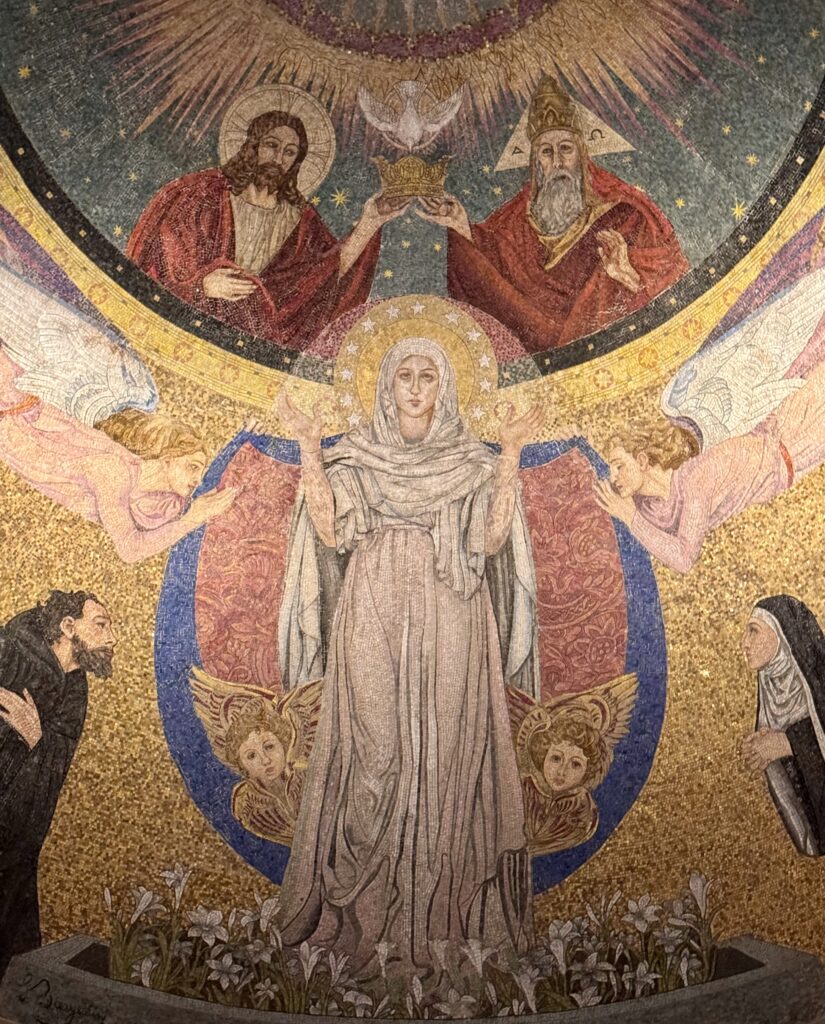
Practical Guide & Tips For Visiting Santa Prassede
Address: Via di Santa Prassede 9A. You go in the side door. The main entrance is entirely hidden. That’s one reason it’s so easy to miss this church.
Hours: Open daily 10:00 am to 12:00 pm & 4:00 pm to 6:30 pm. So don’t come during your lunch break!
Tickets: Admission is free. You need one euro coins to light up the Chapel of San Zeno.
How Long To Spend? 30-45 minutes is enough to see the church and admire the mosaics.
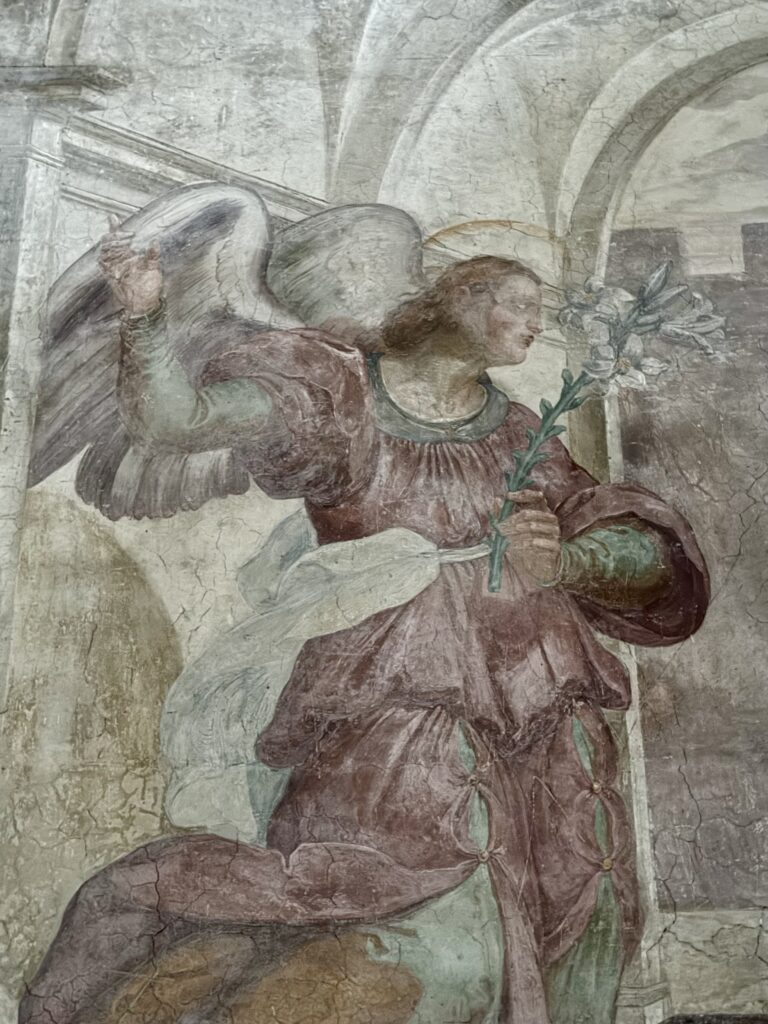
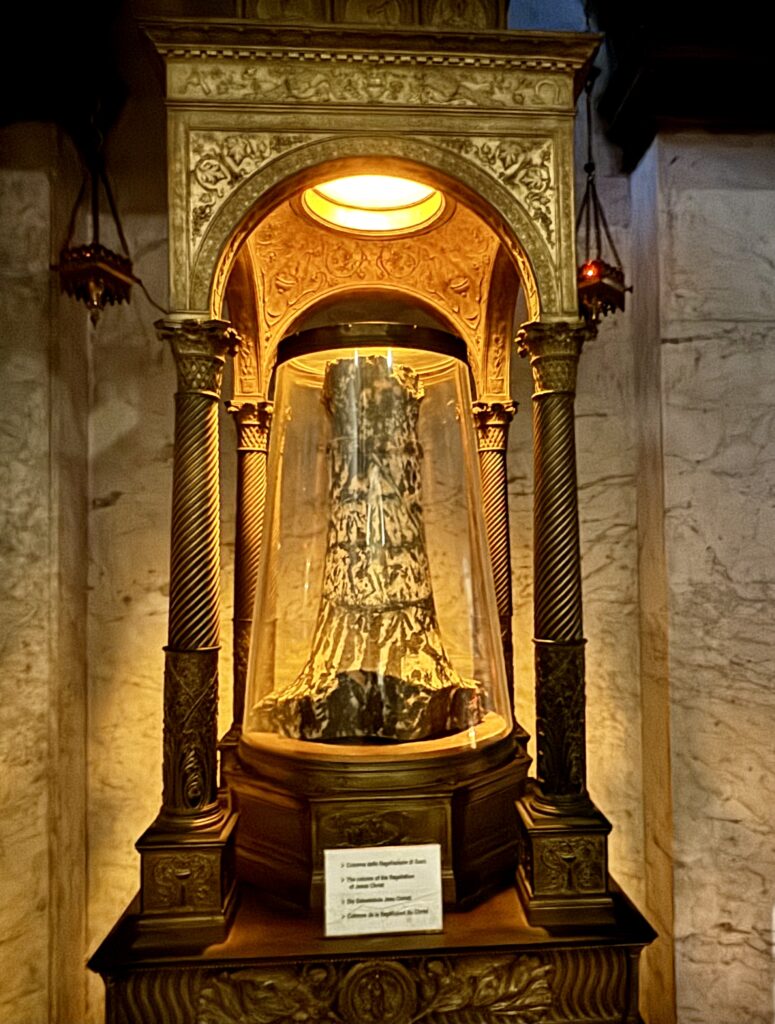
And that’s a wrap. I hope you’ve enjoyed my guide to San Prassede. You may find these other Rome travel guides and resources useful:
- 8 ways to spend 1 day in Rome
- 3 day itinerary for Rome
- 5 day itinerary for Rome
- Best museums in Rome
- Hidden gems in Rome
- Archaeological sites in Rome
- Guide to the Borghese Gallery
- Guide to Palatine Hill
- Guide to the Roman Forum
- Guide to the Colosseum
If you want to visit St. Prassede, pin it for later.

